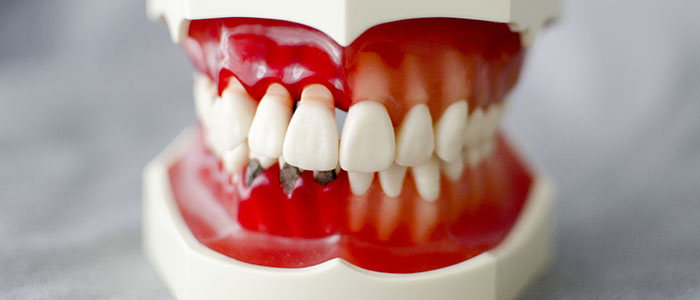Periodontitis and BMI - is there a connection?

Diabetes is one of the risk factors for periodontitis, or tooth loss as it is also called. At the same time, we know that excess weight and obesity can be one of the causes behind diabetes. Is there also a connection between the presence of periodontitis and obesity?
The role of Institute of Postgraduate Dental Education
Project leader
Project start
2020
Partner
Funding
Folktandvården, Region Jönköpings län
Project leader
Ola Norderyd, consultant orthodontist, Department of Parodontology, Institute for Postgraduate Dental Education, Region Jönköpings County. Professor, Department of Odontology and Oral Health Sciences, School of Health and Welfare. Adjunct Professor, Faculty of Odontology, Malmö University.
Project members
Shariel Sayardoust, consultant orthodontist, Dr. Med., Department of Periodontology-Endodontics.
Previous or related articles
- The Secrets of Jönköping: Why Do Most 80-Year-Olds Have More Than 20 Remaining Teeth, and Why Are There Very Few Edentulous?
- Secular trends over 40 years of periodontal health and disease in individuals aged 20–80 years in Jönköping, Sweden: Repeated cross‐sectional studies
- Oral health of individuals aged 3–80 years in Jönköping, Sweden, during 40 years (1973–2013). I. Review of findings on oral care habits and knowledge of oral health
- Oral health of individuals aged 3–80 years in Jönköping, Sweden, during 40 years (1973–2013). II. Review of clinical and radiographic findings
Purpose and goal
Periodontitis is an infectious disease that presents as inflammation of the tissue that supports the tooth, which leads to loss of tooth attachment and the surrounding bone. Severe periodontitis is the sixth most common disease in the world and affects almost ten percent of the population.
Periodontal health, together with freedom from caries, are the two most important factors when it comes to being able to keep your teeth for life. Pronounced risk factors for periodontitis are inherited genetics, tobacco smoking and diabetes.
Obesity increases the risk of developing insulin resistance, which in turn leads to type 2 diabetes. Being overweight in itself also increases the need for insulin in the body. This project wants to look more closely at a possible connection between periodontitis and obesity in a population.
Challenges
As mentioned, there are more risk factors for periodontitis than just diabetes. The challenge is to ensure that any association between obesity and periodontitis is genuine and that it does not co-vary with any other risk factor for periodontitis such as smoking, socioeconomic status, oral hygiene status, age and gender.
Solution
The project will use and study a well-defined population sample. A series of cross-sectional surveys, a total of five in Jönköping, have been carried out every ten years starting in 1973.
Common to all the surveys has been to survey oral health and health care needs in the population. The participants in all the examinations have been examined by dentists both clinically and with x-rays.
We have focused on the parts of the examinations that concern periodontitis. The participants also filled in questionnaires with questions about general health, oral health, dental care habits and lifestyle issues.
Effect
If it turns out that there is a connection between periodontitis and obesity, this can then be brought to attention in order to both prevent the two diseases and also to make aware the possible effect of severe obesity on the treatment outcome in periodontitis.


